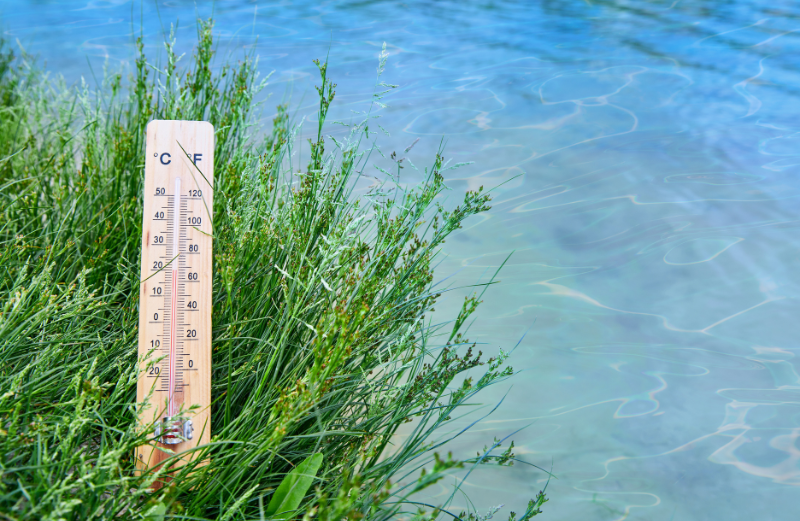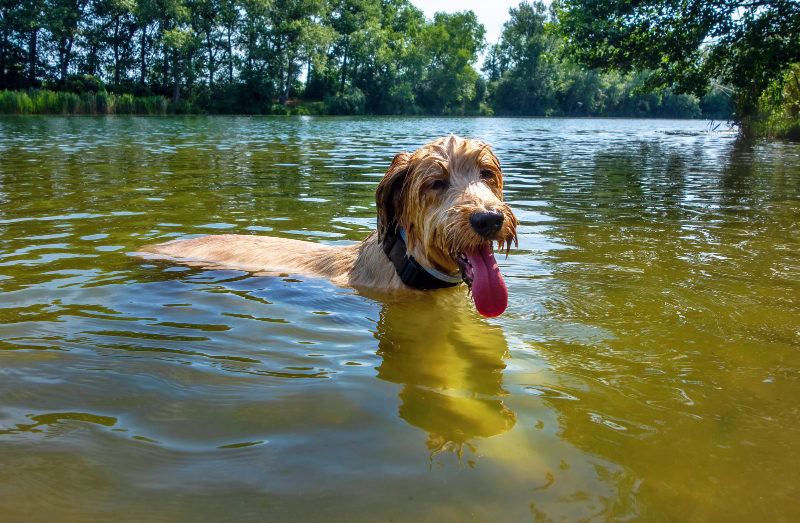
The serene allure of shallow lakes and the expansive majesty of North America's larger lakes have long captured the hearts of nature enthusiasts. As you stand by the tranquil waters, have you ever pondered the nuanced differences between lakes and ponds beyond their size? This question beckons a deeper exploration of the complexities that define these aquatic landscapes.
Lakes, with their vast depths, experience stratification in lake water temperature during the late summer, creating diverse habitats for many aquatic animals. This stratification is crucial for maintaining lake water quality and supporting a dynamic ecosystem throughout winter. In contrast, ponds present a more uniform composition of pond water, lacking significant temperature changes with depth, which fosters a distinct yet equally vital environment for wildlife. This fundamental understanding of the difference between lakes and ponds reveals the essential roles each plays in supporting biodiversity, influencing human health, and contributing to our Water Resources.
Embarking on this exploration, we delve into the distribution of lakes and the concentration of microorganisms within, assessing water quality and its implications for the future climate. Our journey will span from the microbial activity in the depths of mountain ponds to the aquatic life thriving in the shallows, offering insights into pond ecology and the summer season's effects on water bodies. This dive into the science and ecology behind lakes and ponds aims to enrich our appreciation for these ecosystems, shedding light on the intricate balance that sustains life and the critical need for conservation as we face changing climates. Join us as we explore these captivating water worlds, gaining a new perspective on the familiar and fostering a deeper connection with the natural environments surrounding us.
Table of Contents:
- What's in a Name? Exploring the Definitions of Lakes and Ponds
- Size Matters, But How Much? Distinguishing Lakes from Ponds
- Deep Dive or Shallow Waters? Understanding Depth Differences
- Temperature Tales: Do Lakes and Ponds Feel the Heat Differently?
- Home Sweet Home: Who Lives in Lakes vs. Ponds?
- Formation Fascination: How Are Lakes and Ponds Born?
- Conclusion
- Frequently Asked Questions
What's in a Name? Exploring the Definitions of Lakes and Ponds
In North America's aquatic environments, the names we assign to bodies of water such as lakes and ponds are more than mere labels—they are gateways to understanding their profound nature. While it might appear straightforward to distinguish a lake from a pond based on size, the reality is a tapestry of nuances that reveal the intricate balance of freshwater ecosystems. Let's dive into the characteristics that set these two types of water bodies apart and explore the myriad factors that define them beyond mere physical dimensions.

A pond is defined as a small, shallow body of water where sunlight reaches all the way to the bottom, allowing photosynthesis to occur throughout. This consistent sunlight exposure leads to minimal temperature differences, creating a uniform environment within the pond. The shallow depth of ponds also means they can completely freeze over in colder climates, affecting the types of organisms that can live there. Small streams may feed ponds or rely entirely on rainfall and groundwater, highlighting their isolated nature and smaller size compared to larger bodies of water.
Transitioning from pond to lake isn't a matter of size or depth alone. Still, it involves a rich tapestry of ecological characteristics, including oxygen levels, the presence of non-native species, and aquatic diversity. Some regions might set specific criteria, such as surface area or depth, to distinguish between the two; however, these standards can vary widely, reflecting the complexity of nature's creations.
Delving into the distinctions and similarities between North America's largest lakes and natural ponds illuminates their critical roles within the ecosystem. It's not solely the terminology that matters but a deeper comprehension of their environmental significance, the life they harbor, and their interactions with the terrestrial landscape. As we explore these freshwater landscapes, we uncover the essence and importance of lakes and ponds, marked by their aquatic diversity, the balance of oxygen levels, and the vibrant life sustained beneath their surfaces. Through this journey, we come to appreciate not just the names we give them but the vital contributions these water bodies make to our natural world.
Size Matters, But How Much? Distinguishing Lakes from Ponds
The question of size when distinguishing between lakes and ponds is intriguing, highlighting the complexity and variability of nature itself. While it's tempting to think of lakes as large and significant and ponds as small, the truth is that water body size, although a critical factor, is just one part of a broader ecological puzzle.
In general, lakes are indeed larger and deeper than ponds. Their vastness allows for substantial depth, supporting a complex layering of water temperatures known as thermal stratification. This stratification can create different habitats within the lake, from its warm, oxygen-rich surface to its cooler, darker depths. A lake's larger size also means it can support a more extensive variety of aquatic species, from tiny plankton to large fish and mammals, significantly impacting local climate and water cycles.
Ponds, being smaller, are usually shallow enough that sunlight can penetrate to the bottom, fostering a more uniform temperature throughout the entire water column. This uniformity means ponds can support a different but no less essential range of plant and animal life, often including species that thrive in warmer, shallower waters. Despite their smaller size, natural ponds play a crucial role in local ecosystems, acting as vital sites for biodiversity, water filtration, and habitat for various species.
However, there's no universal standard for what size differentiates a lake from a pond. The distinction often depends on local name preference rather than specific measurements. This ambiguity reflects the diversity of aquatic environments worldwide and the complexity of classifying natural features. Some regions might classify a small body of water as a lake due to its historical or cultural significance, while others might label a relatively large water body a pond based on local naming conventions.
Size does matter in distinguishing lakes from ponds, but not in a strict or exclusive sense. Instead, it is a starting point for understanding these vital aquatic environments' unique characteristics and ecological roles. By exploring beyond mere dimensions, we gain a deeper appreciation for these ecosystems' dynamic and interconnected nature, appreciating their role in supporting a wide array of life forms and maintaining water levels in various landscapes.
Deep Dive or Shallow Waters? Understanding Depth Differences

The depth of a water body significantly influences its ecological characteristics, behavior, and the life it supports. When comparing larger water bodies like lakes with natural ponds, understanding these depth differences offers insight into their distinct environments and biological communities.
Lakes, characterized by their greater depths, exhibit a complex vertical structure. This depth facilitates thermal stratification, where the water column divides into layers of differing temperatures during the warmer months. The top layer, known as the epilimnion, is warm and rich in oxygen, supporting a wide range of aquatic life. Below lies the thermocline, a middle layer where the temperature drops rapidly with depth, acting as a barrier that prevents the mixing of surface and bottom waters. The deepest layer, the hypolimnion, is cold and often oxygen-poor, creating a distinct habitat for cold-water species and processes. This stratification is crucial for the ecological dynamics within lakes, influencing the distribution of organisms, nutrient cycling, and water quality.
Ponds, in contrast, are generally shallow enough that sunlight can penetrate to the bottom, allowing photosynthesis throughout the entire water body. This uniform exposure to sunlight keeps the water at a relatively consistent temperature, eliminating the distinct thermal layers found in larger lakes. The shallow nature of ponds means they can warm up quickly in the sun, supporting different aquatic plants and animals adapted to warmer, more uniform conditions. In winter, ponds can freeze completely, affecting the survival strategies of resident organisms. The lack of depth-related stratification in ponds fosters a unique ecological environment where interactions between organisms are more intertwined, and nutrient cycles are directly influenced by the activities of both aquatic and terrestrial organisms around the pond's perimeter.
The depth of lakes and ponds not only defines their physical appearance but also their biological personality. In lakes, depth creates a variety of habitats, supporting a diverse array of life forms and complex ecological interactions. Ponds, with their shallow waters, offer a different but equally complex web of life, where the proximity of aquatic and terrestrial ecosystems leads to rich biodiversity. Understanding these depth differences is essential for appreciating the ecological roles of lakes and ponds, recognizing their importance in biodiversity conservation, and addressing the challenges of water management and habitat protection.
Temperature Tales: Do Lakes and Ponds Feel the Heat Differently?

The temperature dynamics of lakes and ponds are fascinating tales that reveal much about their ecological roles and the life forms they support. Indeed, lakes and ponds "feel the heat" quite differently due to their distinct physical characteristics, most notably their depth and size.
Lakes, with their more extensive volume and deeper waters, experience a phenomenon known as thermal stratification during the warmer months. This process creates layers within the lake that vary in temperature: the upper layer (epilimnion) is warmer and well-oxygenated, benefiting from direct sunlight and wind action. Beneath this, the thermocline acts as a transitional zone where temperature decreases rapidly with depth. The deepest layer (hypolimnion) remains calm and often less oxygenated. These temperature layers influence the types of organisms that can thrive in each zone and play a critical role in the lake's ecological processes. In colder months, lakes may turn over, mixing their waters and redistributing nutrients and oxygen.
Ponds, in contrast, are generally shallow enough that they do not stratify. The sun's rays can penetrate the bottom, warming the water relatively evenly. This consistent temperature throughout the pond supports a different, often more uniform, ecosystem than lakes. Ponds can heat up and cool down more quickly than lakes due to their smaller volume of water, making them more sensitive to seasonal and daily temperature fluctuations. This sensitivity affects the reproductive cycles, growth rates, and survival strategies of the organisms living in and around them.
How lakes and ponds interact with temperature has profound implications for their ecological health and biodiversity. Lakes, with their stratified waters, can support diverse habitats and species at different depths. Ponds, being more homogeneous in temperature, often harbor ecosystems closely interconnected with their immediate environment. Both bodies of water act as vital components of their local ecosystems, but the distinct ways they experience and react to temperature changes underscore the complexity and adaptability of aquatic life. This temperature differentiation not only shapes the living communities within these waters but also influences how they respond to environmental changes, highlighting the importance of understanding and protecting these natural resources.
Home Sweet Home: Who Lives in Lakes vs. Ponds?
The distinction between the inhabitants of lakes and ponds vividly illustrates how the environment shapes ecosystem diversity. Though similar, these aquatic homes offer vastly different living conditions due to their size, depth, and temperature profiles, each supporting unique life communities.

Lakes, with their expansive and stratified waters, provide a range of habitats across their depth gradients. A diverse life thrives in the well-lit, oxygen-rich upper layers—from floating algae and surface-skimming insects to various fish species that feed on these smaller organisms. The cooler, deeper waters of lakes are home to cold-water fish like trout and char, which prefer these low-temperature environments. Lakes also support a broader variety of aquatic plants along their shores, where sunlight reaches the bottom, promoting photosynthesis. This habitat diversity allows for a complex food web, with larger predators, including birds and mammals, drawn to these environments for food.

Ponds, being shallower, do not have the same degree of thermal stratification as lakes, which means their inhabitants experience more uniform conditions. Ponds often become warm and nutrient-rich, creating ideal conditions for a different set of organisms. They are havens for frogs and turtles, which can be seen basking in the sun on warm days. Aquatic plants thrive in ponds, from floating varieties to rooted plants that stretch across the water column. This dense vegetation supports a rich community of insects, small fish, and amphibians. The warmer, more stable temperatures and abundant plant life make ponds critical breeding grounds for many species.
The life forms residing in lakes and ponds are adapted to their specific conditions, from the open, deeper waters of lakes to the warmer, plant-rich environments of ponds. While lakes may host a greater diversity of fish and support larger species due to their size and depth, ponds play a crucial role in supporting juvenile stages of aquatic life and offering refuge to a wide range of amphibians and insects. Understanding the inhabitants of these water bodies sheds light on the intricate balance of aquatic ecosystems and highlights the importance of conserving these environments as vital habitats.
Formation Fascination: How Are Lakes and Ponds Born?
The origins of lakes and ponds highlight nature's diversity and the processes shaping our planet's landscapes. These bodies of water are born from various events, each telling a unique story of Earth's dynamic surface.
Lakes can form through several significant geological phenomena:
- Glacial Activity: Glaciers carve out basins that fill with meltwater, creating glacial lakes.
- Tectonic Activity: Movements of the Earth's crust, such as the pulling apart of tectonic plates or one plate sinking below another, create depressions that become tectonic lakes.
- Volcanic Activity: Volcanic eruptions leave behind craters or calderas that fill with water, forming volcanic lakes.
- Riverine Processes: Rivers dammed by landslides, debris, or human-made barriers result in riverine or dammed lakes.
Ponds typically arise from more localized or immediate causes:
- Glacial Kettle Ponds: Retreating glaciers leave behind chunks of ice in depressions; these chunks melt to form kettle ponds.
- Human Activities: Excavation for agriculture, recreation, or landscaping, as well as damming small streams, can lead to pond creation.
- Natural Accumulation: Water can accumulate in floodplains or depressions caused by wind erosion, naturally forming ponds.
- Animal Actions: Beavers, for instance, dam streams, creating ponds and altering landscapes.
Understanding how lakes and ponds are formed not only offers a glimpse into the Earth's geological and climatic history but also underlines the importance of these ecosystems. They are products of both ancient events and ongoing natural and human activities, each with its role in supporting biodiversity and shaping the environment around us. The formation stories of lakes and ponds are as varied as the life they harbor, reflecting the intricate balance of our planet's ecological and geological systems.


